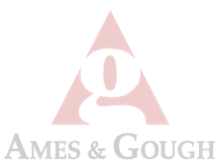legal PERSPECTIVES
Warning Flags for Structural Engineers
Watch for Ten Hidden Risks in Contracts
By Robert Hughes
Today, more owners and other project participants are looking for ways to transfer risk to engineering firms by inserting potentially onerous language in contracts. In many cases, such contractual exposures are not insurable under an engineering firm’s professional liability insurance or other policies, leaving the firm with potentially substantial uninsured exposures.
Here are ten contractual issues that engineers should flag, discuss with their legal counsel and insurance advisor, and either address in the final version of the contract or be prepared to make informed business decisions on how to proceed.
Indemnification Language
- Duty to defend. A key contractual pit- fall for engineers involves the inclusion in an indemnity agreement of an obligation to “defend” a client from claims made by third parties. This affirmative obligation is not insurable under professional liability policies. Strike any reference to an obligation to defend a client; as a back-up, agree to reimburse defense costs in your proportionate share and as recoverable under common law (do not include legal fees or costs for enforcing the indemnity obligation itself ).
- Tied to negligence. Many indemnification clauses require the engineer to indemnify the project owner or client for “any and all claims arising out of” the engineer’s services, without regard to negligence. Modify this language so: 1) it is tied to the engineer’s negligence, and 2) you agree to indemnify a client only for third party claims. Also, be sure that a finding of some degree of negligence on your part does not then trigger an obligation to indemnify the owner or client for their percentage of fault.
- Indemnifying entities related to the owner. Often, clients insert language requiring engineers to indemnify entities that may be “related” to the actual client in the con- tract. This may include agents, representatives, subsidiaries, affiliates, other consultants, and lenders, all creating insurability issues. Strike any references to parties or agents beyond your client, its officers, and its employees.
Standard of Care
- Expansive wording. When defined in the contract, the standard of care should require the engineer to “… perform its services within the degree of skill and care ordinarily exercised by other members of the same profession practicing in the same locality and under similar circumstances as of the time services were rendered.” Watch for language altering the standard, such as requirements for the engineer to exercise its “best efforts” or the “highest” degree of care, or that allows the client to make unilateral determinations as to the quality of your services. Further, your contract never should promise perfection or total accuracy in your professional services; that might be interpreted as a warranty or guarantee, both of which are excluded under most professional liability policies.
- Agreeing to act in a fiduciary capacity. If a client inserts a sentence in the contract that reads “consultant will act at all times in the best interests of the client” or refers to there being a fiduciary duty owed by the consultant, this is “disguised” standard of care language. Strike any language referring to a fiduciary relationship or that requires you to act at all times in the client’s best interest.
General Contractual Issues
- Waiver of consequential damages. Consequential or special damages are indirect economic expenses, such as lost profits and elements of delay damages or diminution in value. Although potentially insurable, consequential damages represent a disproportionate risk to the compensation provided to the professionals in the engineering contract. Try to reject language holding you responsible for consequential damages and consider adding a clause to waive that responsibility.
- Site safety. Contracts should include a safety clause, making job site safety the sole responsibility of the contractor and excluding the engineer from any related obligation such as site supervision. By written agreement, the project owner should require the contractor to name the engineer as an additional insured under the contractor’s commercial general liability and auto policies.
- Ownership of documents. Strike contractual language that offers a client unlimited license to use the A/E firm’s instruments of professional services; instead, contracts should only provide a limited license for the client’s specific project needs. If this is not possible, secure a waiver and indemnity from your client for any subsequent use or re-use of your work product.
- Retaining consultants historically hired directly by the owner. Owners traditionally hire an A/E firm to design their project, with the firm then hiring various subconsultants. However, some services, such as geotechnical engineering and environmental investigations, are traditionally independently retained by the owner, outside the prime engineer’s responsibilities. Today, more contracts seek to have the prime consultant retain all subconsultants on the project (often including firms selected by the owner). You should not agree to this; if you hold the contract, you are liable for their negligence.
- No right to rely on owner-supplied information. In any project, engineers can only complete their work after receiving accurate information and documents from the owner, such as geotechnical reports, as-builts of existent structures, etc. Traditionally, contracts addressed at least two related obligations – one on the owner to furnish accurate information on a timely basis; the other, giving engineers the right to rely on that information. However, there has been an increase in language altering these obligations. Insist on language that obligates the owner to provide timely, accurate information necessary for you to complete your scope of services and to affirm your right to rely on that information. By understanding these hidden exposures, structural engineers will be better positioned to practice good contractual hygiene and have productive, profitable, and mutually reward- ing relationships with their clients.■ Disclaimer: The information in this article is for educational purposes only and is not legal advice. Readers should not act or refrain from acting based on this article without seeking appropriate legal or other professional advice as to their particular circumstances.
42 STRUCTURE magazine APRIL 2020
